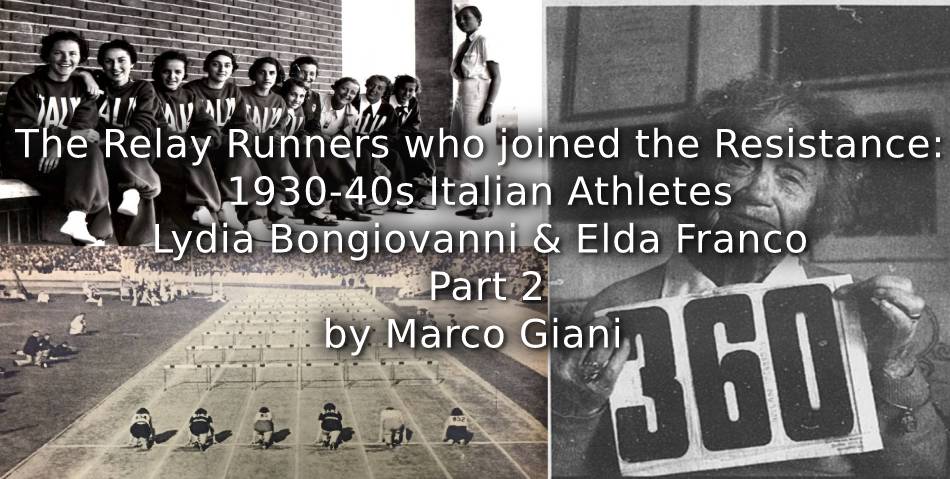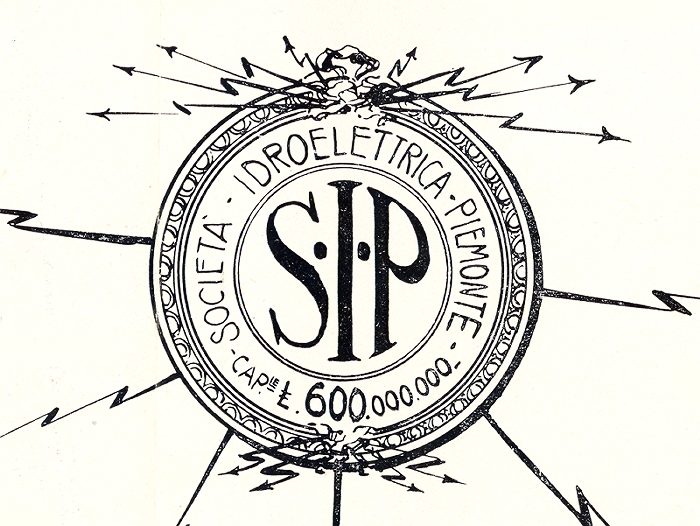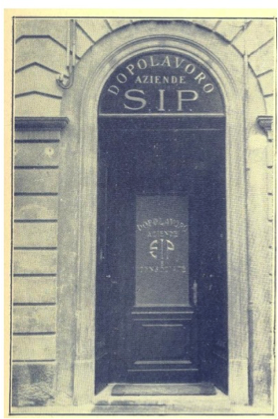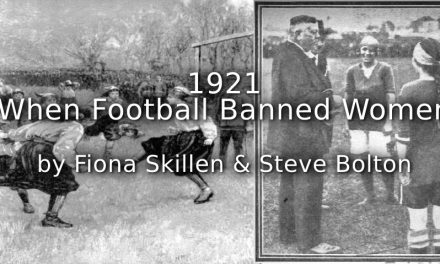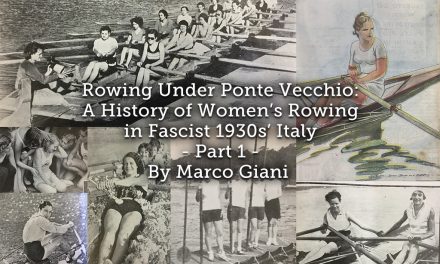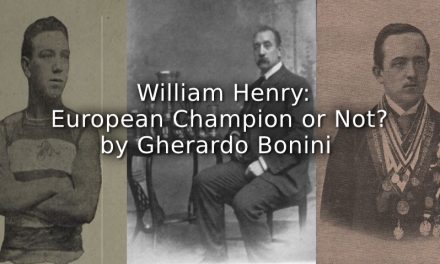The author would like to express thanks to Levio Bottazzi and Maura Quiriconi for having shared their memories. Thanks also to Levio Bottazzi for having shared some pictures from his personal archive, and to Lyana Calvesi for doing the same with her mother’s (Gabre Gabric) archive. Some photos are courtesy of Gherardo Bonini.
PLEASE NOTE – Express permission is required to reproduce ANY of the images taken from these personal archives – please contact Playing Pasts or the author for more details.
To read Part 1 Click HERE
Unlike Ondina Valla and Claudia Testoni, Lydia may have been a real university student, because before and after the Turin games she actually competed under the colours of Gruppo Universitario Fascista ‘Fascist University Group’ (GUF) Torino. In 1934-1935 she didn’t have any major victories: was she perhaps focusing on her studies? Anyway, it does seem that she never took a University degree.
Let’s leave for a moment Lydia, and meet the other two Turinese characters of this story, that is the blue-collar worker Vezio Bottazzi and the engineer Angelo Tollini. The latter was a FIAT manager, who was able to take advantage of his knowledge of the German language to travel a lot to the Reich during Hitler’s rise years: he became close friend with Hans von Tschammer und Osten, the leader of all German sports (he had a large role in the success of 1936 Summer Olympics). Angelo was keen on athletics too: thanks to his judging activity during the 1934 European Championship held in Turin, he started his career in the FIDAL. He was appointed to accompany the Italian national teams during the away international meetings, but his wife Leida Bottazzi (the aunt of Levio) wasn’t happy at all that in 1934 Angelo accompanied both the male and female teams (to Hungary and Austria), since she knew her husband’s love for beautiful girls! Later, in 1940, due to Angelo’s infidelity, the couple separated, however before that, the little nephew Levio had the chance to meet, in person, both Ondina Valla and Claudia Testoni at his uncle and aunt’s house.
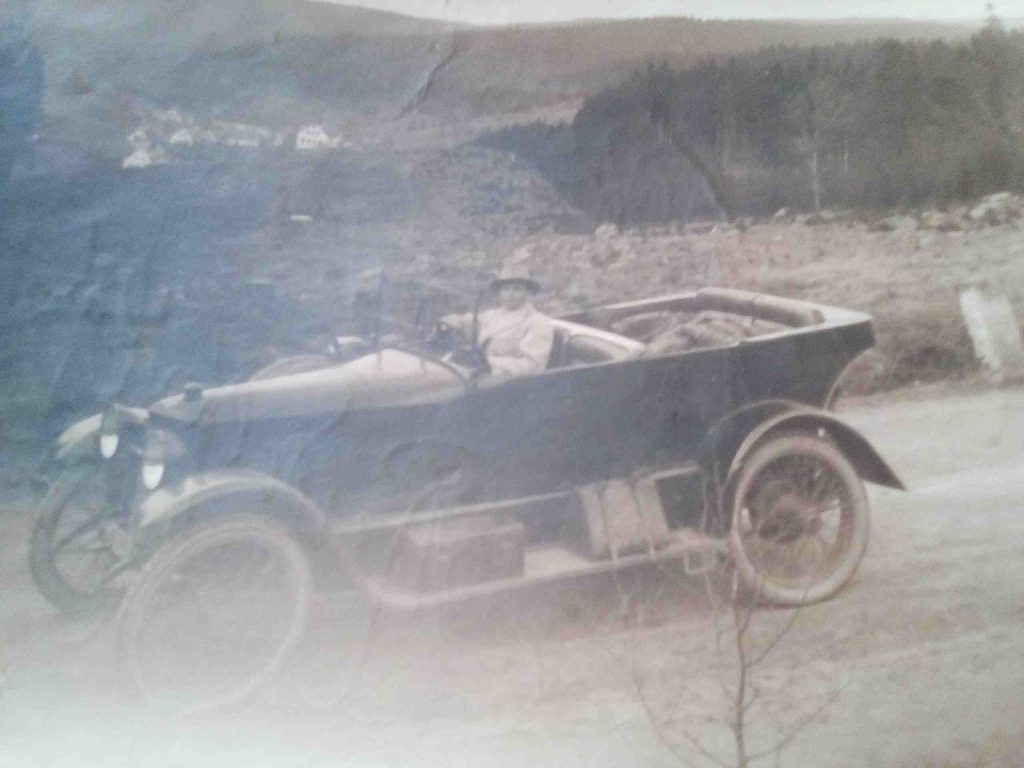
Angelo Tollini driving in Bohemia (1921)
Source: Archivio privato Levio Bottazzi
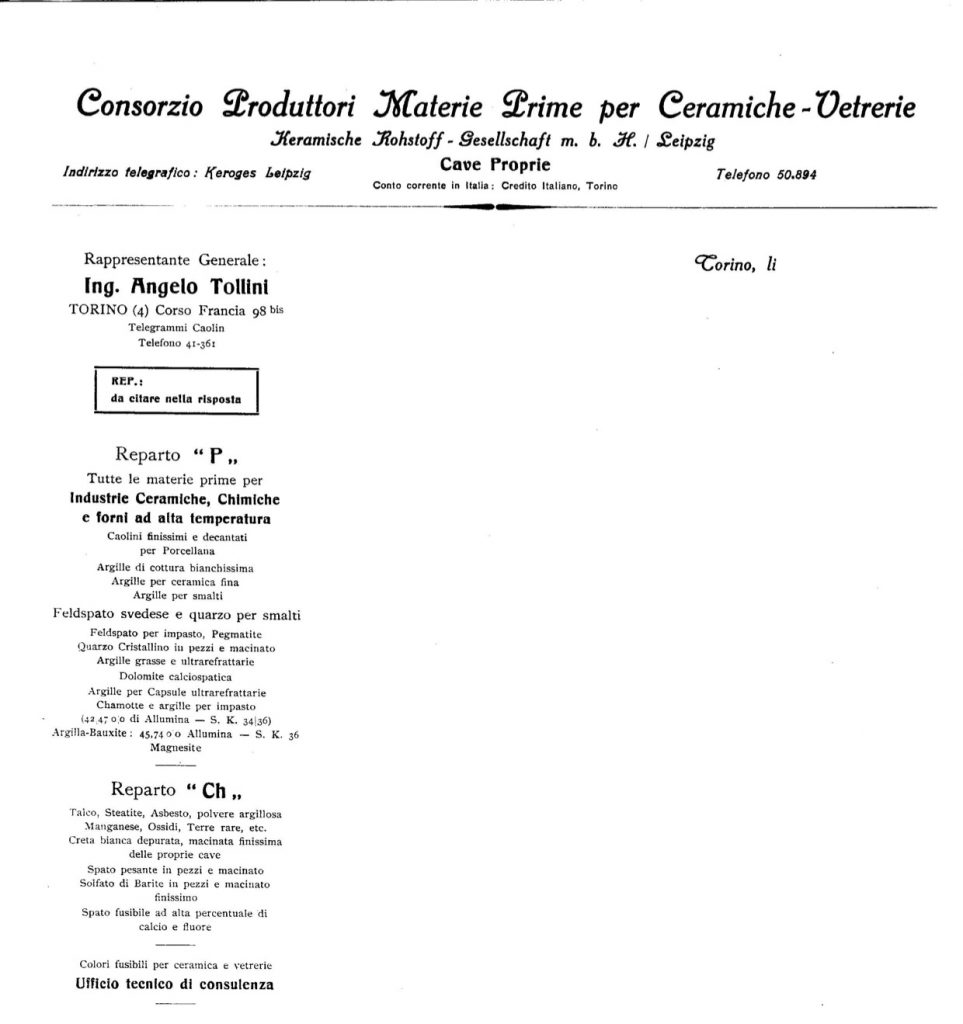
Angelo Tollini’s letterhead (no date)
At that time, Angelo worked as commercial representative for a company that exported pottery materials based in Leipzig
Source: Archivio privato Levio Bottazzi
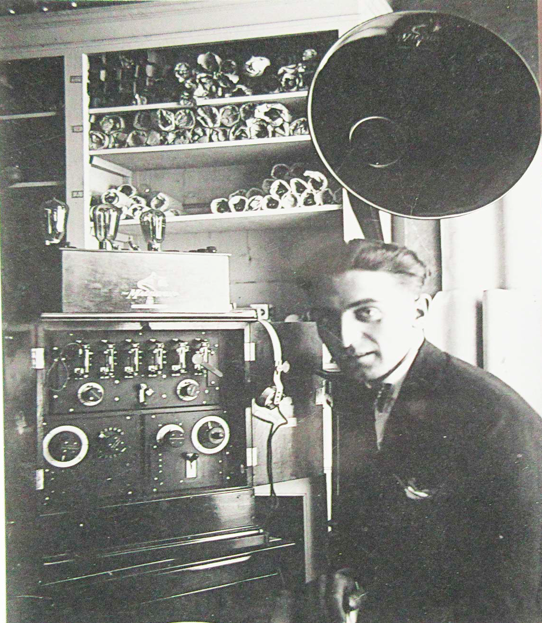
A young Vezio Bottazzi, in mid-1920s
At the time he as a technical designer for Radioson corporation, owned by his brother-in-law Angelo Tollini, who had married Leida Bottazzi in 1919
Source: Archivio privato Levio Bottazzi
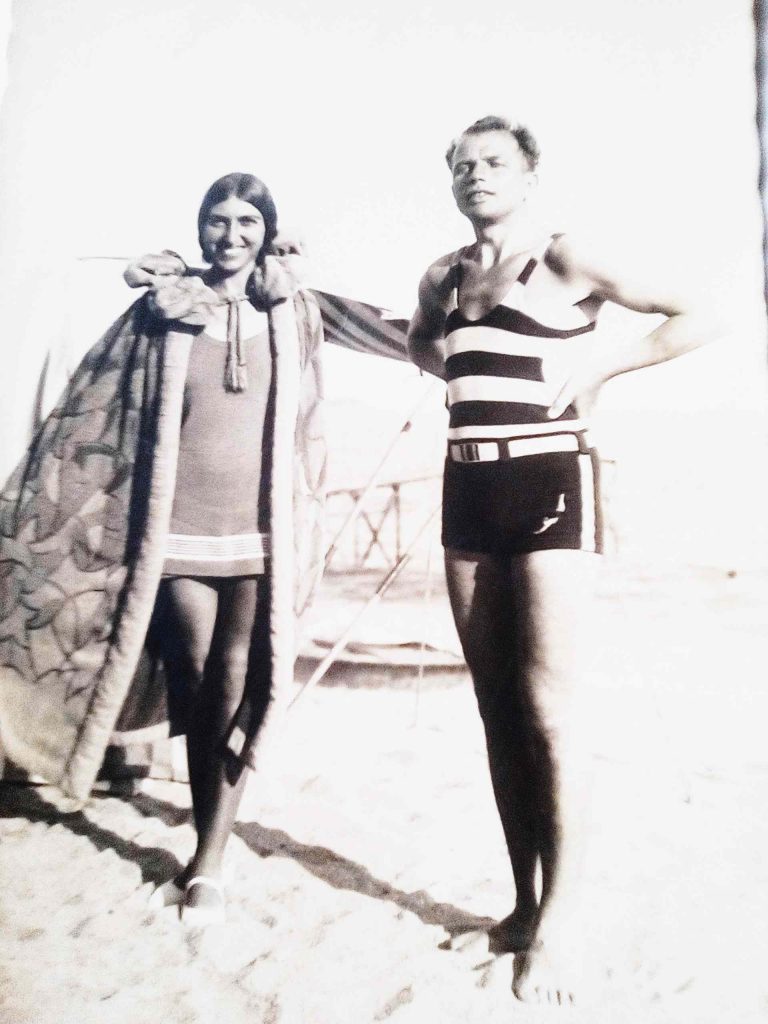
Leida Bottazzi and Angelo Tollini at San Rafael (Côte Azur) beach, 1930
Source: Archivio privato Levio Bottazzi
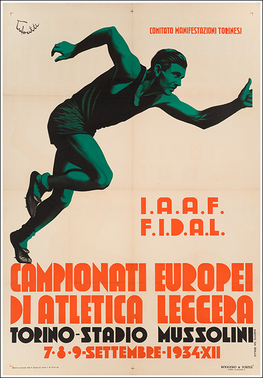
The 1934 European Athletics Championship poster
Source: https://en.wikipedia.org/wiki/File:1934_European_Athletics_Championships_logo.png
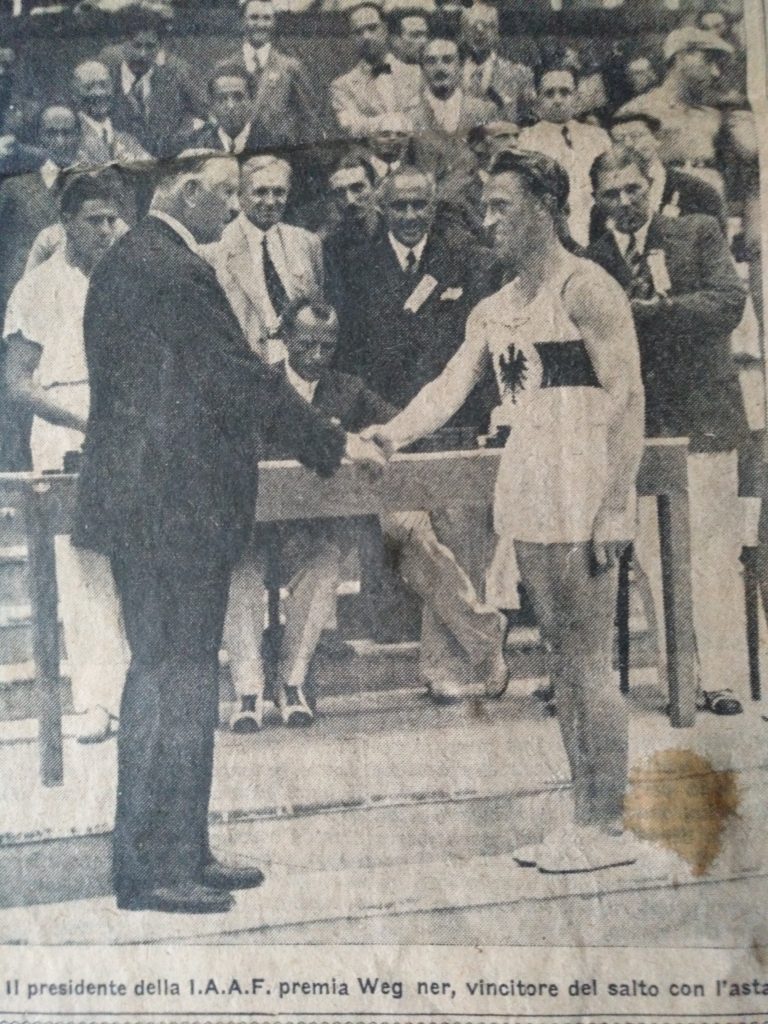
1934 European Athletics Championship
Angelo Tollini is the judge, sitting at the table
The 29-years old Vezio Bottazzi is standing behind the two men behind Tollini
Source: Archivio private Levio Bottazzi.
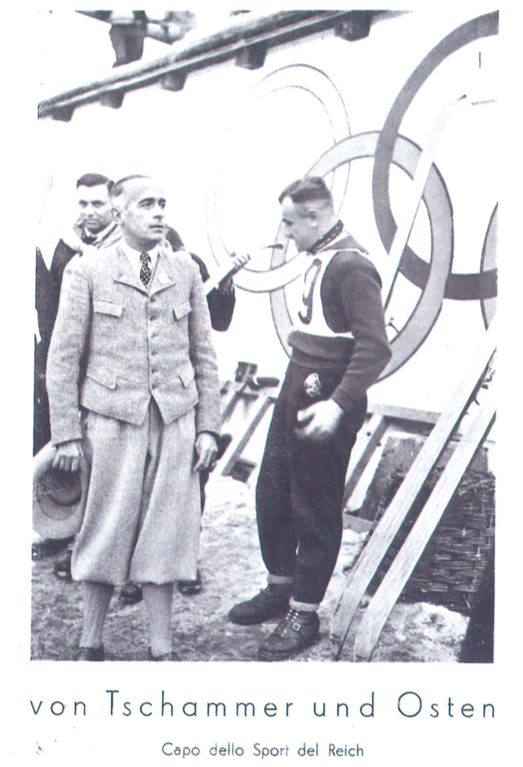
German politician von Tschammer und Osten, depicted as “Head of Reich Sports”
After the Nazi’s conquest of France, he invited Angelo Tollini to visit the Maginot Line!
Source: Neve e Ghiaccio, January 1941, p. 9
Let’s move to the SIP, the Turin-based Electric Company where Lydia was working as a clerk from the early Thirties: it was the work place of Vezio Bottazzi (Levio’s father, Leida’s brother and Angelo’s brother-in-law). Although he wasn’t Fascist at all, he joined the local Dopolavoro, because it was the only way to easily and cheaply participate in sport with his colleagues.
-
SIP logo (1927)
Source: https://it.wikipedia.org/wiki/SIP_-_Società_idroelettrica_piemontese
-
The headquarter of DAS, in Turin (1928)
Source: https://archiviostorico.gruppotim.it/portone-della-sede-del-das-sip-1928#gallery-nav
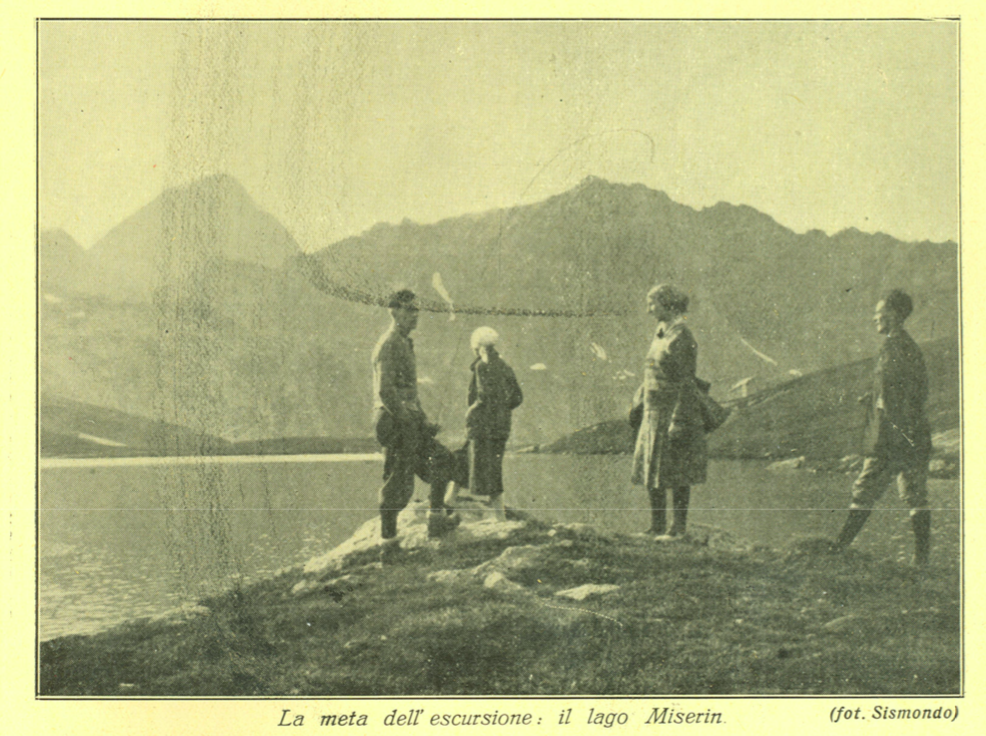
A mountain trip organized by the Turinese DAS
Note that this was a mixed-sex activity, as indicated by the presence of the two women in the image
Source: “Sincronizzando” (1927), from https://archiviostorico.gruppotim.it/it/gruppo-sportivo-das-colonie .
In 1935 Vezio travelled with his colleagues to Rome for the Dopolavoro National Championship: although their swimming performance wasn’t good at all, they did have the chance to visit Rome – for free!
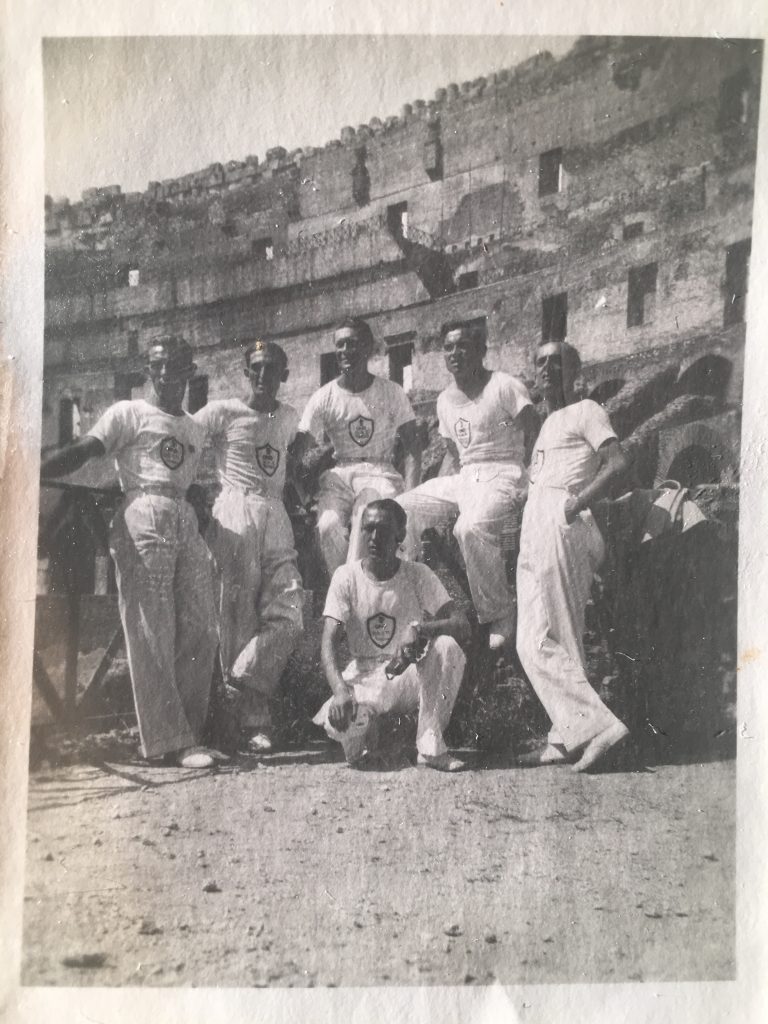
Dopolavoristi at the Colosseum at the 1935 Dopolavoro National Championships
Vezio Bottazzi is standing 2nd left
Source: Archivio privato Lelio Bottazzi
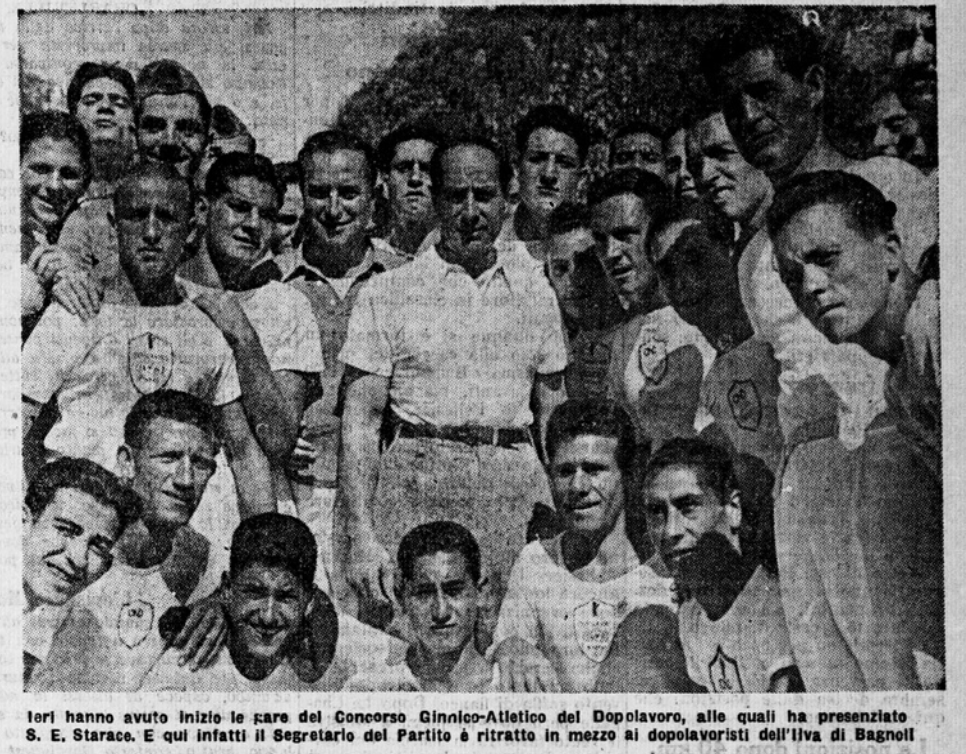
Achille Starace, Secretary of National Fascist Party (PNF) and President of Italian National Olimpic Committee (CONI), among some dopolavoristi from ILVA industries, Bagnoli (Naples) during the Dopolavoro National Championships in Rome (1935)
Source: Il Littoriale, 06/07/1935, p. 1
A video of the Dopolavoro National Championships in Rome (1935) Source: https://youtu.be/LqhLiM1g7W0
Let’s return to Lydia and the Olympic summer of 1936 when she suddenly returned to the top of the Italian women’s athletics movement. The athlete of DAS (the Dopolavoro of SIP) was selected along with Ondina Valla, Claudia Testoni and the young Turinese Fernanda Bullano for the 4x100m relay, as Turinese university students Gina Duvillard and the Milanese Franca Agorni (see https://www.playingpasts.co.uk/articles/football/and-then-we-were-boycottednew-discoveries-about-the-birth-of-womens-football-in-italy-1933-part-10/ ) were the two reserves. In the last international meeting prior to the Olympics, held in Piacenza on 16 June 1936, the Italian relay team won against Austrian opponents, clocking 49’’ 8/10. For the first time, the relay order was Bongiovanni – Valla – Bullano – Testoni: the same that line-up that would be used in Berlin.
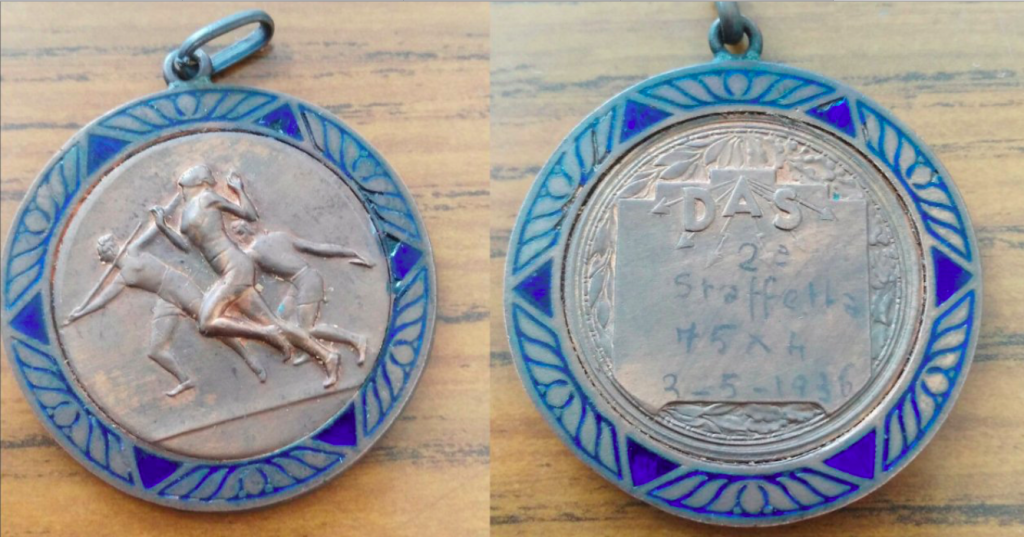
A medal produced for an athletics meeting organized in 1936 by DAS
Note the sporting women on one side, and the lightening-bolts on the other
Source: bit.ly/2TYJdB0.
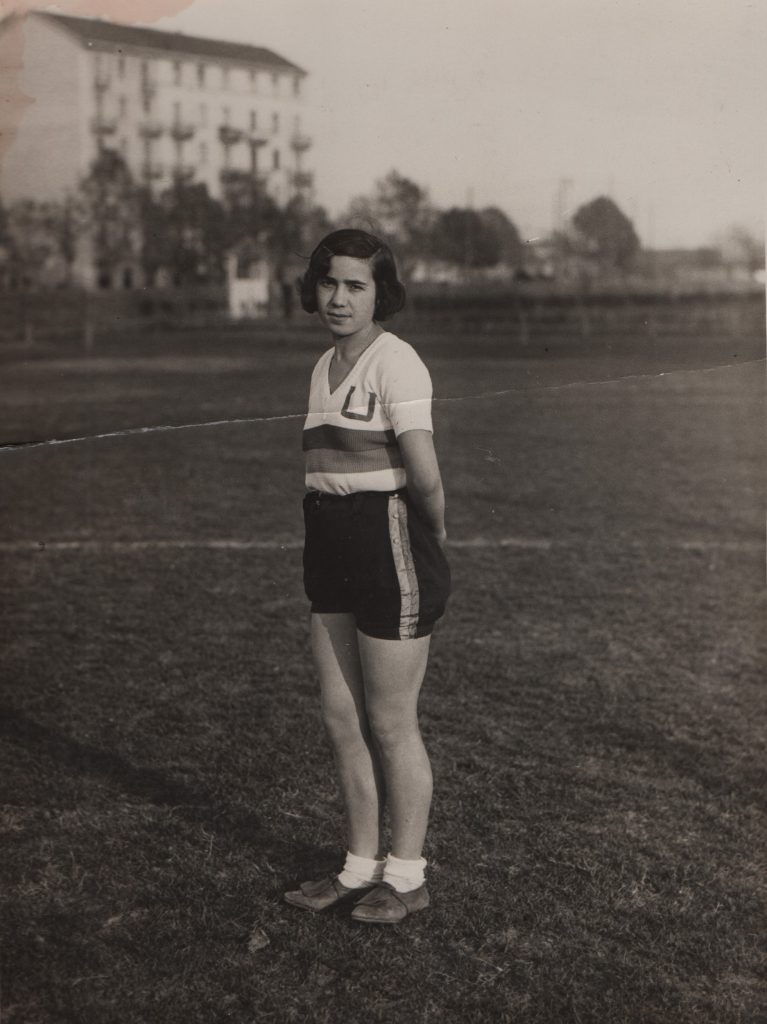
A very young Fernanda Bullano, winner of Targa De Lombardo (1932)
Photo courtesy of Gherardo Bonini.
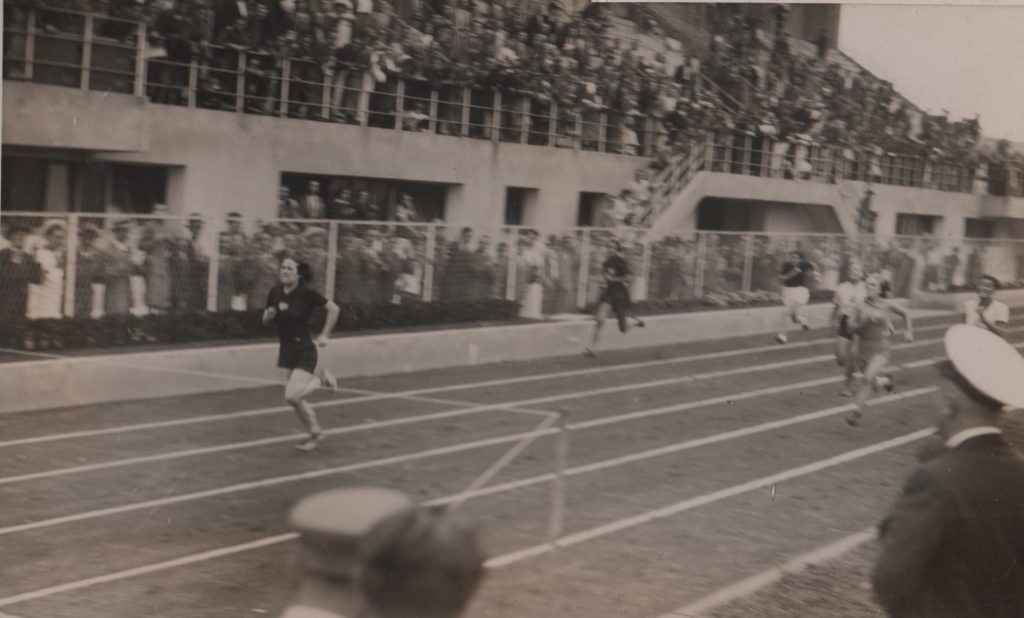
Fernanda Bullano winner of a 100m event
Photo courtesy of Gherardo Bonini.
Training days in Rapallo (April 1936) for the Italian athletes, such as Ondina Valla, Claudia Testoni, Gabre Gabric and Pierina Borsani.
Source: https://youtu.be/gWu-M7cNonQ
Training days in Florence (July 1936): at the beginning you can see Fernanda Bullano, Claudia Testoni, Franca Agorni, Ondina Valla and Gina Duvillard. Source: https://youtu.be/9VTlilRwXUM
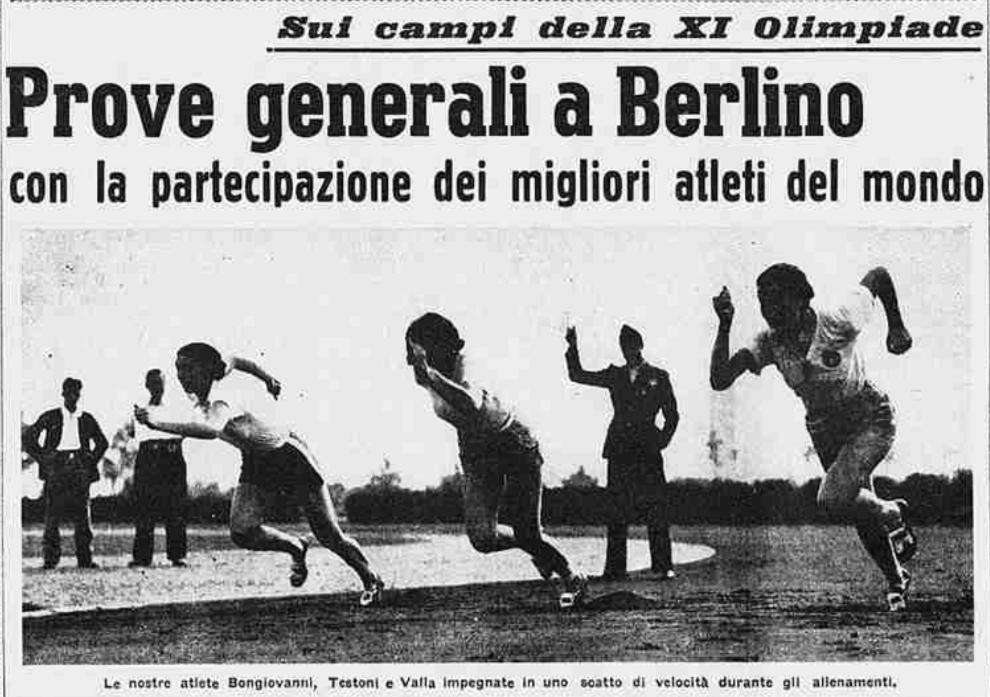
Lydia, Claudia and Ondina training for the Olympic Games
Source: La Stampa, 26/07/1936, p. 4
In late July, the Italian Olympic Team arrived in Berlin. Among them there was Angelo Tollini, who proved to be very useful, thanks not only to his personal acquaintances such as von Tschammer und Osten, but also because of his knowledge of the German language. He served as a translator not only to the powerful Giorgio Vaccaro, Secretary of the CONI and head of the Italian team, but also to prince Umberto of Savoia, heir to the Italian throne (later King Umberto I).
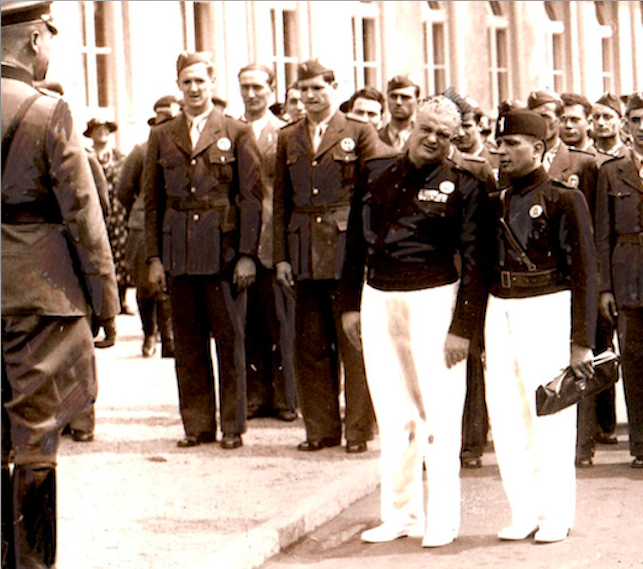
Thanks to the comparison with another image depicting the US team during a Flaggenhissen ‘flag-raising ceremony’ (see https://bit.ly/3aB2pwy)
We can perhaps surmise that this photograph was taken in the Olympisches Dorf ‘Olympic Village’ in Elstal
The Italian athletes are listening to the speech made by the German officer (on the left), while Angelo quietly translates to Giorgio Vaccaro
Courtesy of Gherardo Bonini
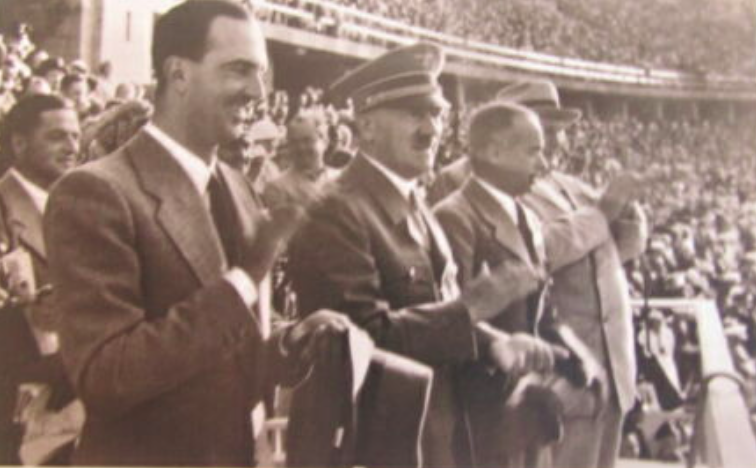
Prince Umberto, Adolf Hitler and von Tschammer und Osten during the Berlin Games
Source: http://bit.ly/3dxCasM .
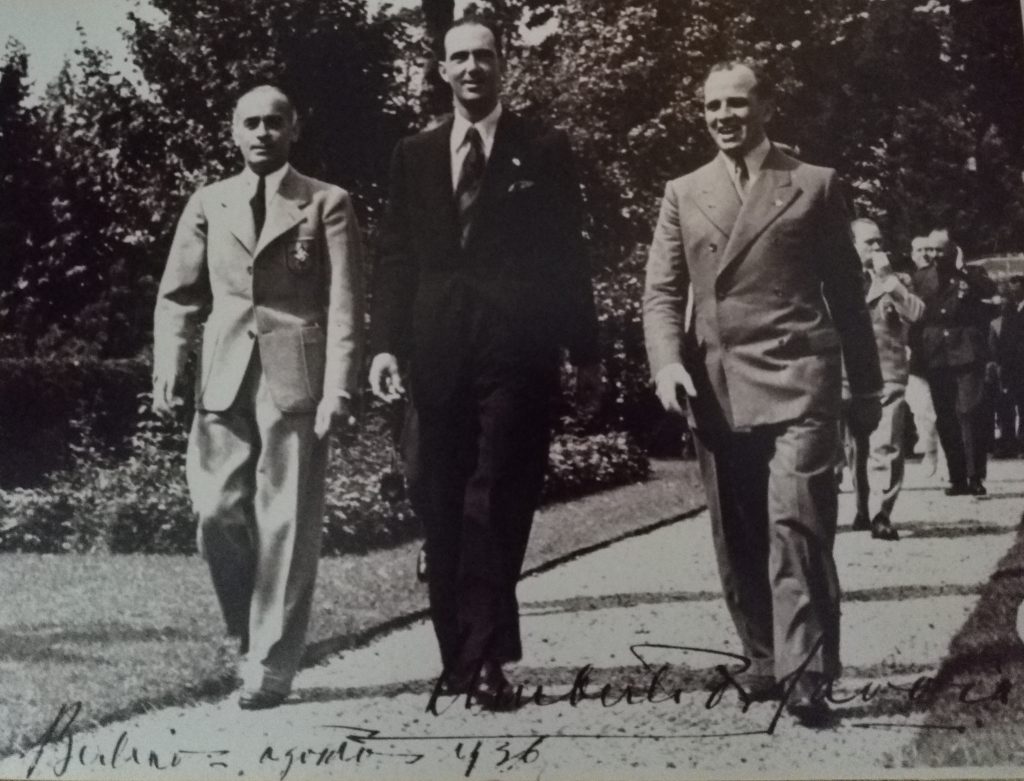
Angelo Tollini (3rd left) walking in Berlin with von Tschammer und Osten (1st) and Prince Umberto (2nd)
Source: Archivio privato Levio Bottazzi.neve
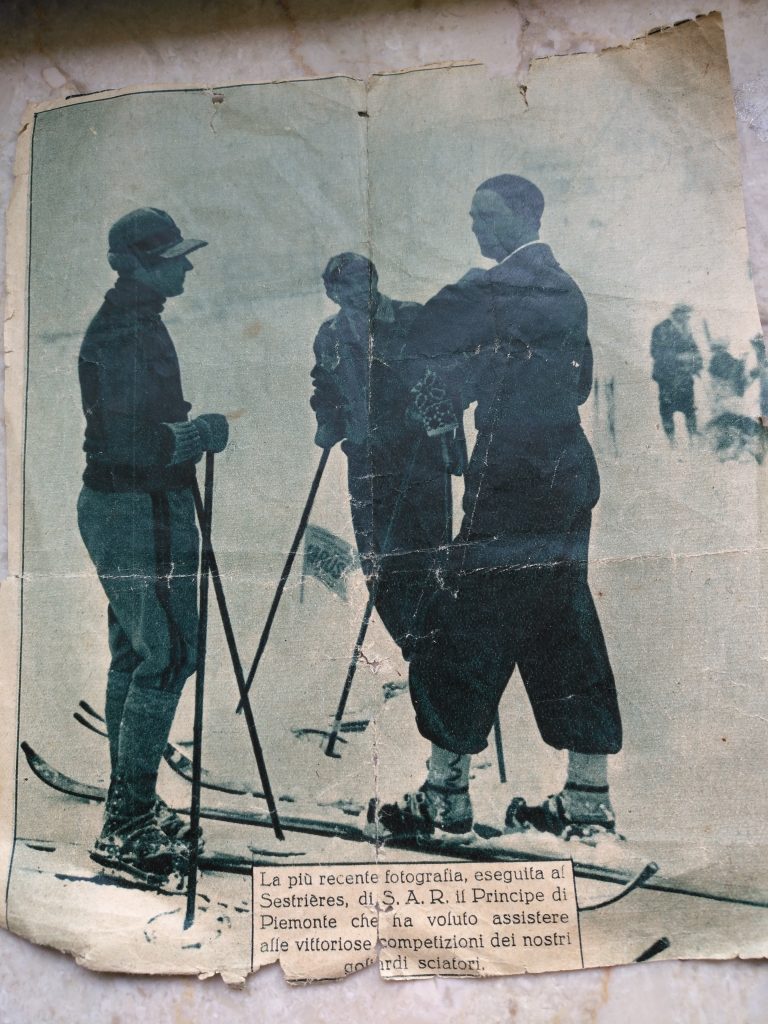
Angelo Tollini and Prince Umberto skiing together
Source: Archivio privato Levio Bottazzi
Meanwhile, for the seven Italian female athletes quartered in the Olympic Village, it was quite a dreamlike atmosphere.
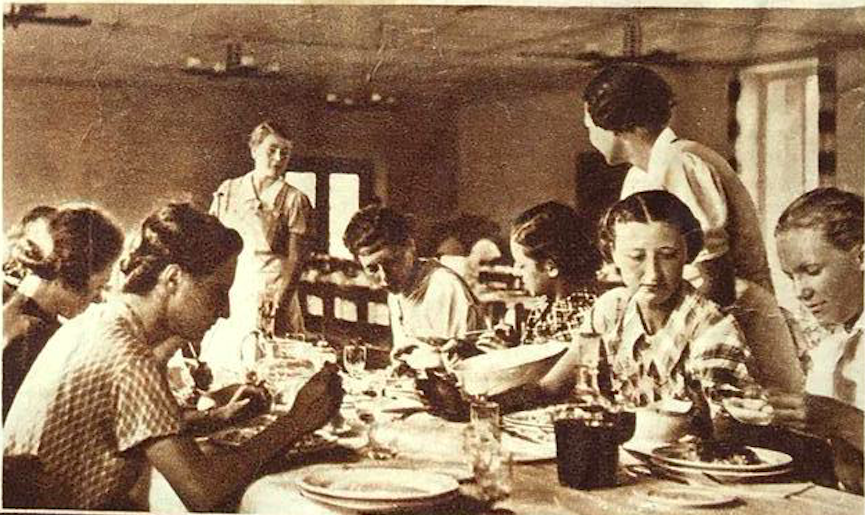
A clipping from an Italian magazine
The athletes (on the right, Gabre Gabric, Claudia Testoni and Ondina Valla) having a meal at the Olympic Village after their morning training session
Source: Archivio privato Gabre Gabric.
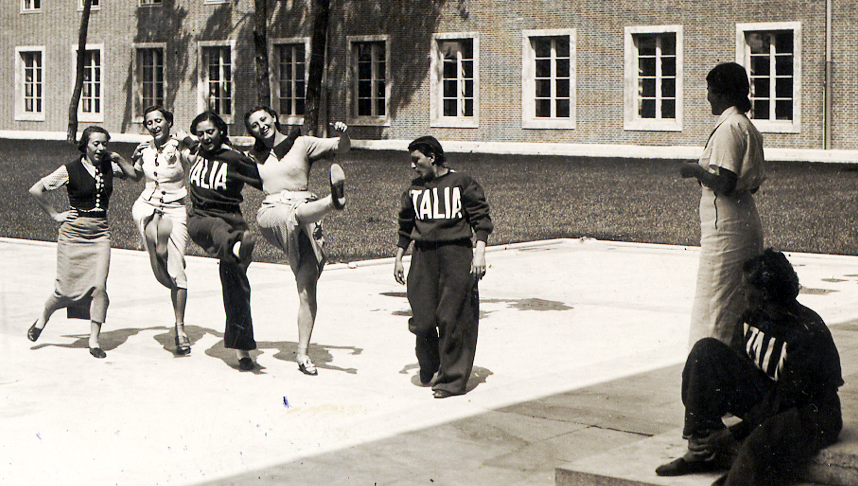
Gina Duvillard, Lydia Bongiovanni, Claudia Testoni and Ondina Valla dancing together at the Olympic Village
Franca Agorni is the 5th women, wearing the ITALIA tracksuit, Gabre Gabric is seated
Source: http://www.ondinavalla.it/foto-olimpiadi/
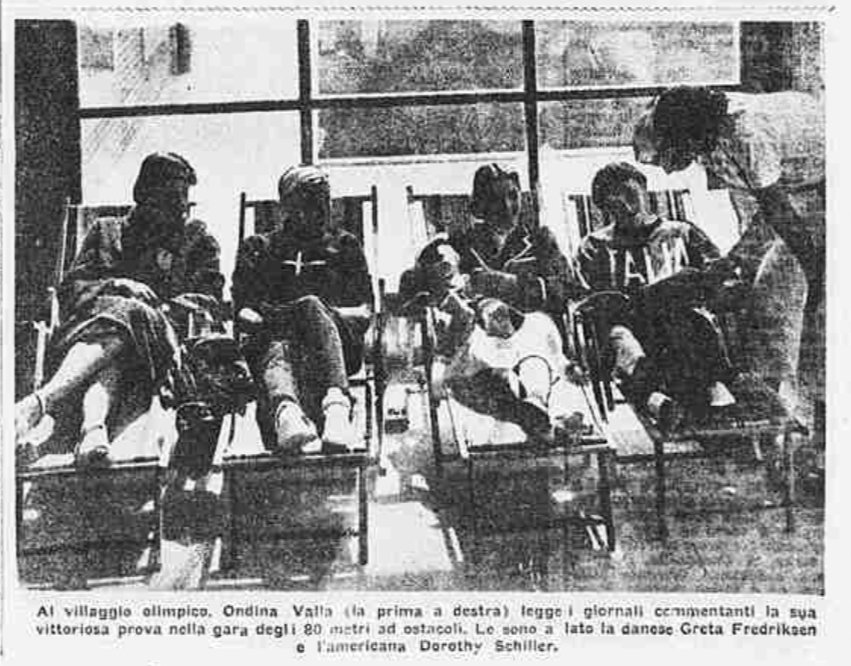
Ondina Valla reading a newspaper, relaxing with some international colleagues
Source: La Stampa, 10/08/1933, p. 3
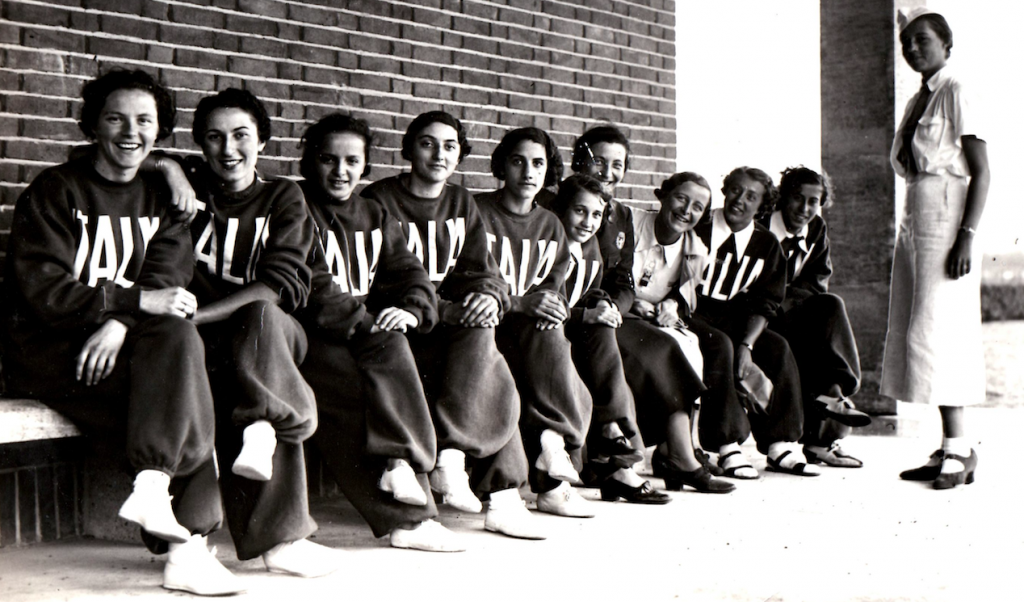
More Italian sportswomen: the National Gymnastic Team
Courtesy of Gherardo Bonini
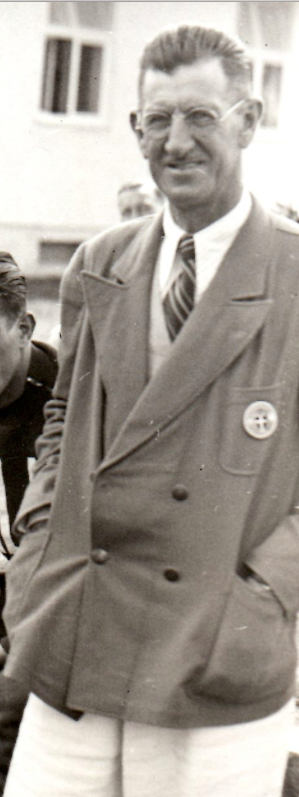
Boyd Comstock
The American coach of both men’s and women’s Italian Athletics team
Photographed in Berlin Olympic Village
Courtesy of Gherardo Bonini.
Of course, being public figures, the Italian athletes had to have some publicity shots taken … The girls are wearing very modest (and large!) tracksuits, since not the entire Italian audience was ready to look at their athletic bodies …
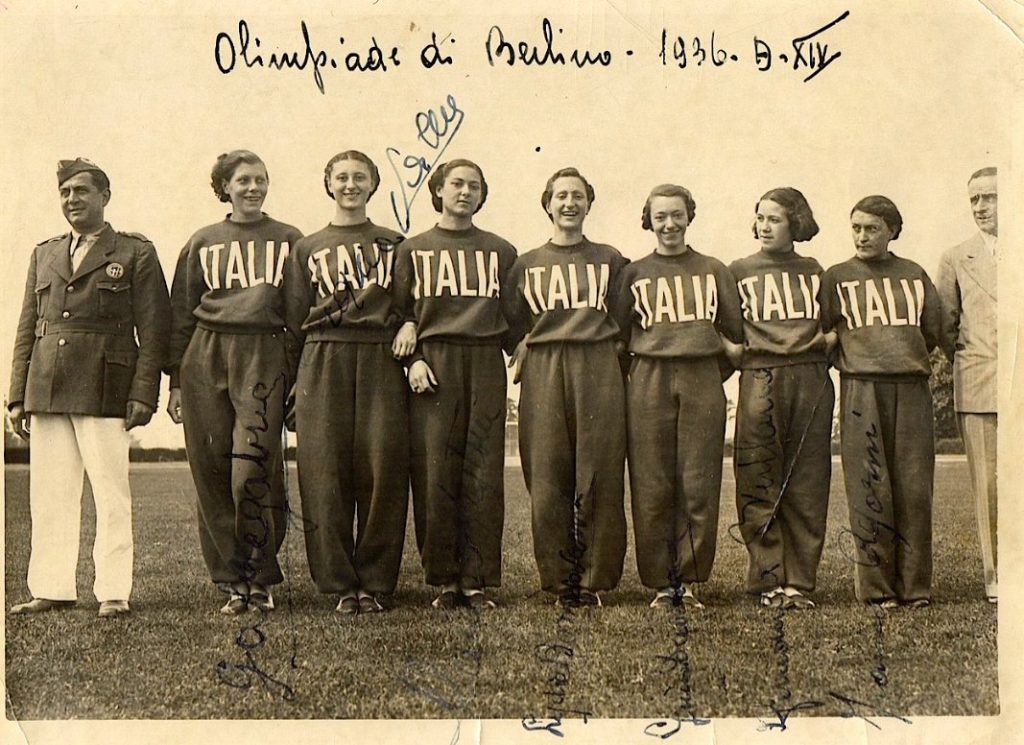
The Italian women’s athletes team in Berlin, with 2 male team managers (neither being Angelo Tollini)
From the left: Gabre Gabric; Ondina Valla; Claudia Testoni; Lydia Bongiovanni; Gina Duvillard; Fernanda Bullano; Franca Agorni
The photo is very useful because it shows the height of each girl
Lydia seen in the middle of the group, with the tall Gabre and Ondina, and the shorter Fernanda and Franca
Source: goo.gl/xHEgef
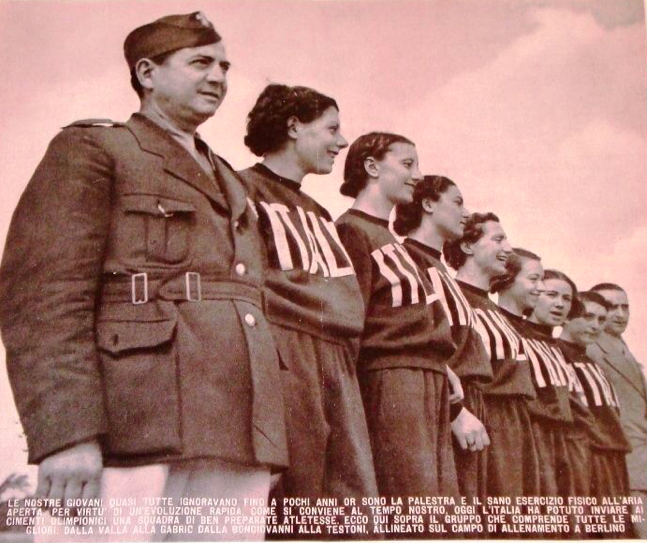
The same image from a different angle
Source:https://twitter.com/calciatrici1933/status/1149063876648087553
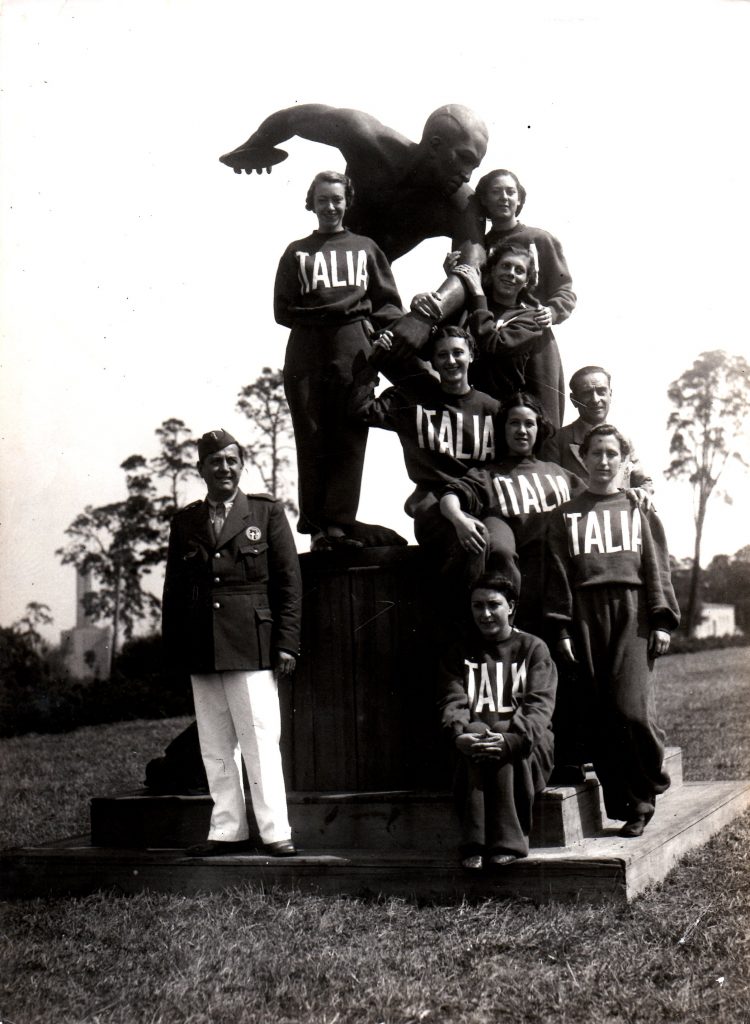
The seven girls posing in front of a statue of a discus thrower, at the Sportforum
(for an image of the statue in the 1936 surrounding, see http://bit.ly/3aBqTWr )
From the bottom: Franca Agorni; Lydia Bongiovanni; Fernanda Bullano; Ondina Valla; Gabre Gabric, Claudia Testoni; Gina Duvillard (beneath the discus)
Courtesy of Gherardo Bonini.
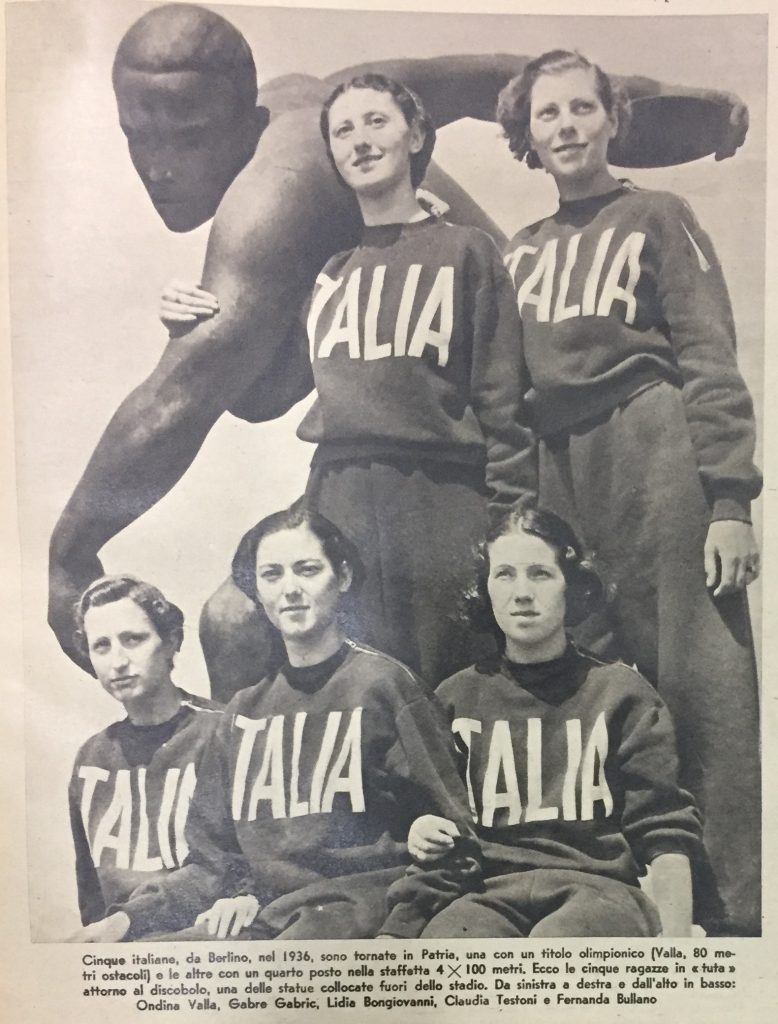
In this image there are only the five girls who actually competed in Berlin, so without Franca Agorni and Gina Duvillard
probably for this reason it was broadly published by the Italian press
Source: «Donne negli stadi», Sport Illustrato, December 1938, p. 5.
Rivers of ink have been devoted to the main Italian women’s sports event, that of the 80m hurdles final (August 6th), because the odds were for a Claudia Testoni victory, rather than Ondina Valla. Journalists and scholars have written a lot about the possible reasons for Claudia’s disappointing performance (a heart-breaking love affair perhaps or that she might have been menstruating at the time), and about the famous and very long photo-finish (the first 4 athletes finished almost together and in the end, Claudia, was placed in 4th position and therefore had no medal). Yet nobody ever highlighted the role that Lydia played in one of the most famous sporting challenge between the best-friends and rivals Claudia and Ondina.
In a 1988 article published by La Stampa, journalist Alberto Fasano described how the sentimental tension between Claudia Testoni and hurdler Gianni Caldana (who was in Berlin with the male National team; he is the 1st left in the nice photo with Jesse Owens which can be seen at http://bit.ly/37xPqdo), was seen as a sort of ‘plague’ that destroyed the women’s team – it has to be remembered that they were just 20- and 21-years old, so very young. On the eve of 80ms hurdles final, Ondina was so tense that she couldn’t sleep. She cried:
‘I would prefer that any girl but Claudia win tomorrow’s race!’.
Fasano (his source could reasonably assumed to be Lydia herself) wrote:
Bongiovanni had to spend all her clever political ability to calm Ondina down, suggesting her calm and caution. Ondina finally found some peace: the day after, even by a nose, she was able to win the gold medal
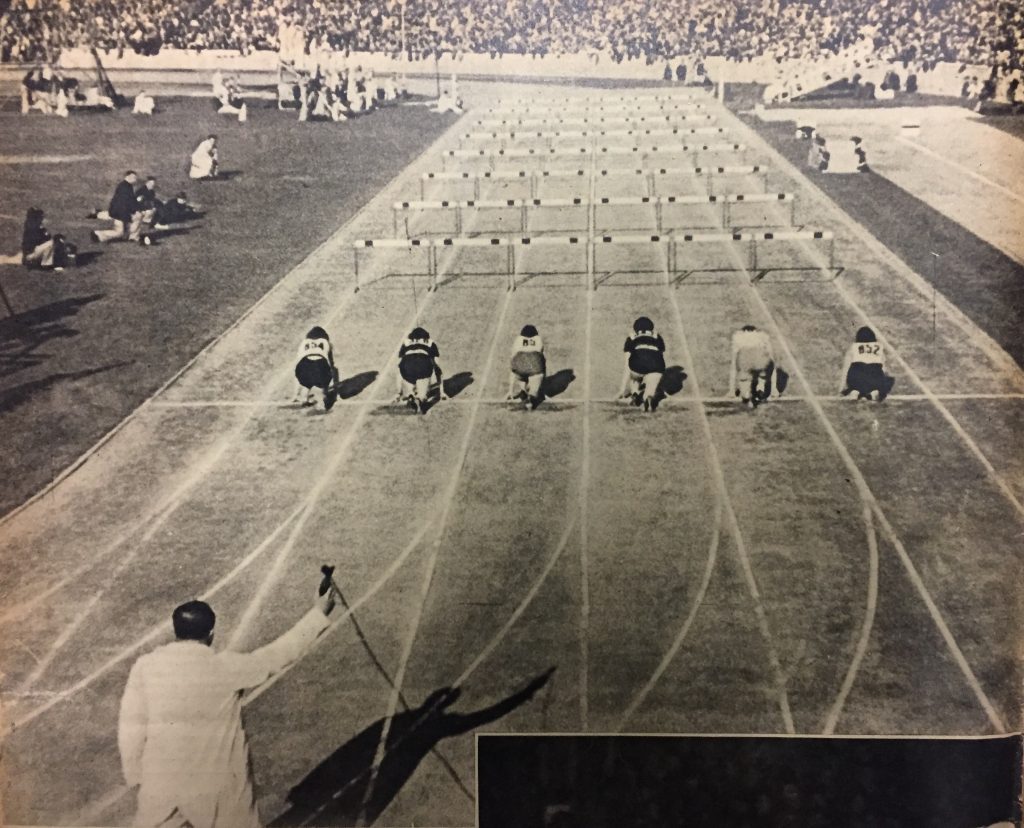
The start of 80m hurdles final in Berlin
The two Italian are in lanes 2 and 4, in darker shirt
Source: Donne negli stadi, Sport Illustrato, December 1938, p. 5
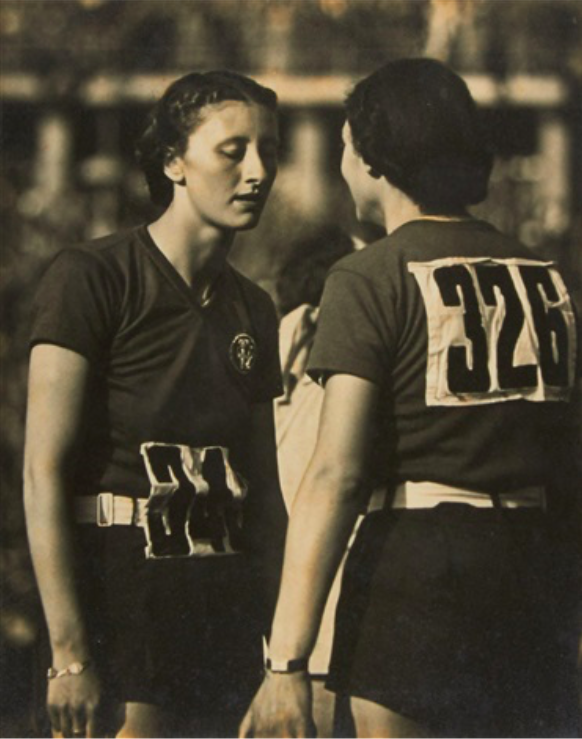
Ondina Valla and Claudia Testoni before the 80ms hurdles final
Source: bit.ly/389Q4ek
As you can see in this video (1:56), the room at the Olympic village had two beds each … In 2:51 you can see the dining room. Source: https://youtu.be/8_WW0l8-4cQ
On 8 August, Lydia finally raced, as the lead-out runner in the Italian 4x100m relay team during the semi-finals. She and her three colleagues finished 3rd, after the invincible German team (46” 4/10) and Great Britain(47” 5/10): their time (48” 6/10) was however a new Italian record!

The results of women’s 4x100m relay
Source: https://en.wikipedia.org/wiki/Athletics_at_the_1936_Summer_Olympics_–_Women%27s_4_×_100_metres_relay
The final race was held on 9 August, and it became famous for what happened during the final baton exchange, which was not completed by the German team (Marie Dollinger to Ilse Dörffeldt) AND under the gaze of Hitler himself! Lydia who had been notified in the Olympic Village about her father’s death was psychologically exhausted: she ran quite badly, forcing her teammates to work hard to overhaul the team from the Netherlands (which included a young Fanny Blankers-Koen) who were 4th. Then Claudia Testoni, running the anchor leg ran so well that she was able to recover overall deficit by herself. In the end, the Italians finished in 4th (48” 7/10, just 1/10 less than the Dutch), an unexpected result. Reaching the podium was just beyond their reach: the United States won in 46” 9/10, then came Great Britain (47” 6/10) and Canada (47” 8/10).
The final of 4x100m relay. Lydia, wearing a dark shirt, moves at 0.57, during the false start Source: https://youtu.be/xKqD_h34V30
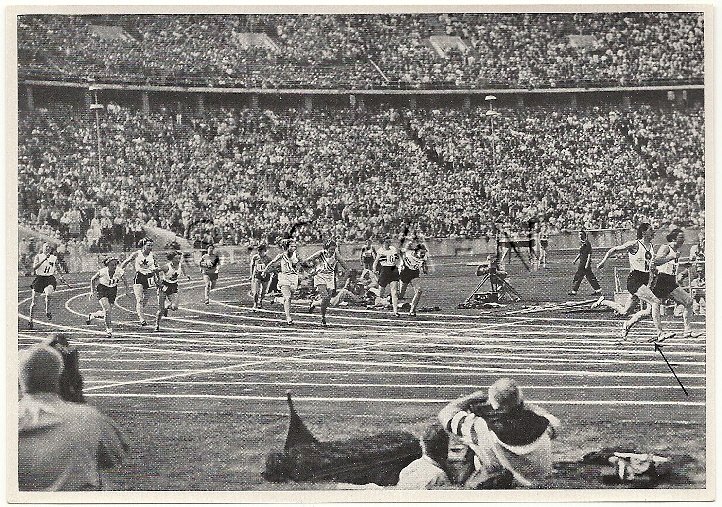
An image of the relay (Canadians on the left)
Note that the Italians (darker shirts) are quite a way behind …
Source: ebay.to/2XW6NAM
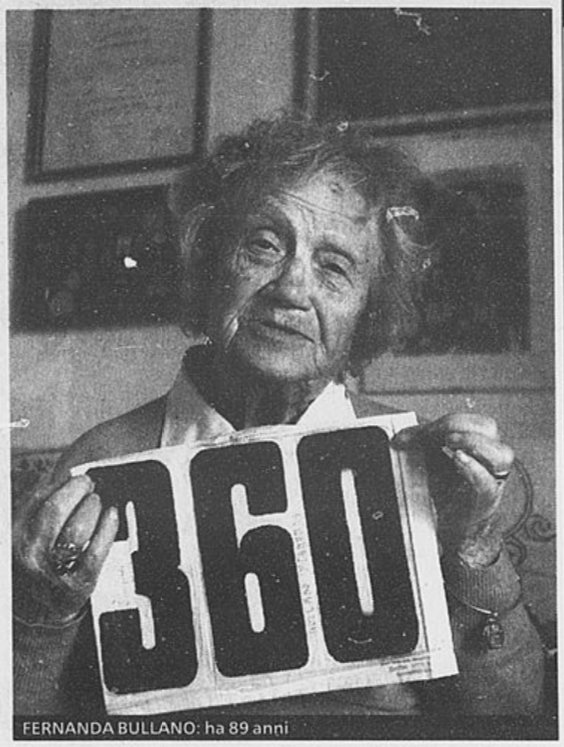
The 89-years old Fernanda Bullano, holding her Olympic number in 2003
Source: La Stampa, 08/03/2003, p. 45.
When Angelo returned to Turin, he had a present for his 6-years old nephew Levio: a Jesse Owens postcard. The uncle said he should look after it because after all those gold medals a Jesse Owen postcard was impossible to find in Berlin!

Unfortunately, Levio can’t find his uncle’s postcard … This one was sent on 9 August 1936 to Hermann Herzog
Source: http://bit.ly/3shpM4a
Article of © Marco Giani
Read Part Three HERE

